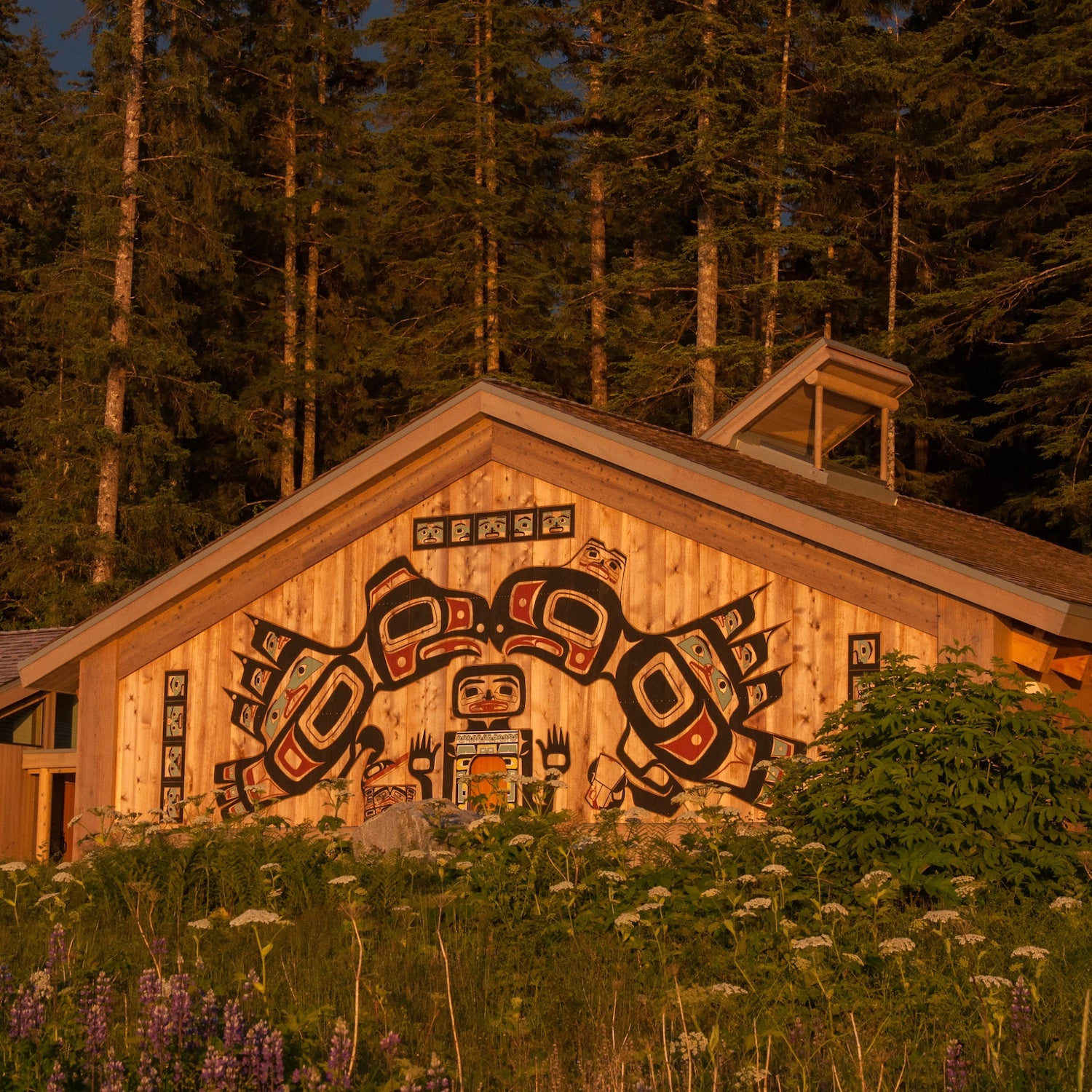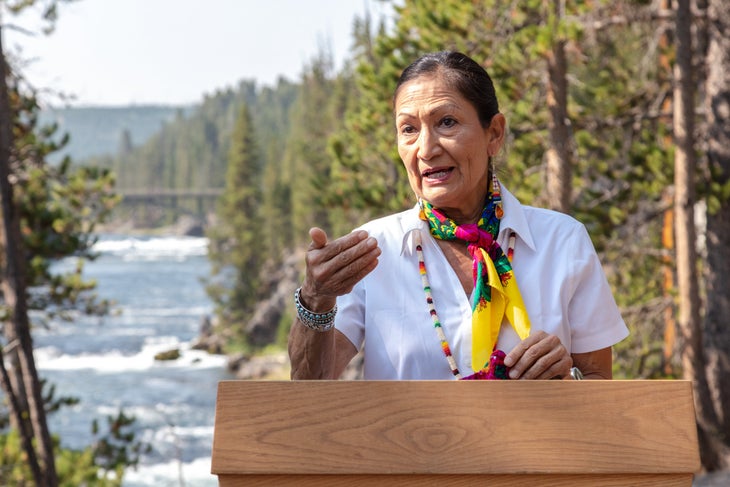
The right folks are at the table anda consensus can emerge. Better yet, they all speak the same language and mostly understand each others concerns
We can be nerviously optimistic here.
A serious success will then motivate all to play ball. A good start with natural checks and balances.

The Federal Government Has a Long History of Stealing Land from Tribes. But Comanagement Is a Step in the Right Direction.
We’re witnessing a monumental shift in federal land management
Dec 13, 2022
https://www.outsideonline.com/adventure-travel/news-analysis/government-tribes-co-management/
Outside's long reads email newsletter features our strongest writing, most ambitious reporting, and award-winning storytelling about the outdoors. Sign up today.
As a teenager, I lived on the boundary of Canyon De Chelly National Monument in the Navajo Nation near the Arizona and New Mexico border. The red rock canyon system extends like fingers outwards from the Chuska Mountains, carving deep into a broad plateau. It ultimately converges into one canyon as it emerges into the Chinle Valley nearly 2,000 feet below and more than 25 miles from where it started.
Multiple civilizations of Indigenous people have called the canyon home thanks to its abundance of water, fertile soils, and fortress-like impenetrability from intruders. Ancestral structures, burial sites, plants, animals, and pictographs are scattered across Canyon De Chelly and hold immense significance to Native people today. Navajo people still live and farm in the canyon.
This national monument, unlike many others, sits entirely within the boundaries of the Navajo Nation on reservation trust land. It wasn’t until 2018 that this park embraced a new structure: being managed cooperatively between the tribe, National Park Service, and Bureau of Indian Affairs—a rarity in park management. But now this type of partnership is becoming a model for U.S. agencies that are finally beginning to embrace tribal co-management of public lands.

Deb Haaland near Yellowstone River (Photo: DOI/Flickr)
Last year, Interior Secretary Deb Haaland and Secretary of Agriculture Tom Vilsack, leaders of the two agencies that oversee the majority of federal lands, issued Order 3403: Joint Secretarial Order on Fulfilling the Trust Responsibility to Indian Tribes in the Stewardship of Federal Lands and Waters. The order calls for federal agencies to take tribes into account when making decisions about public land, water, and wildlife, and to embrace co-stewardship. It affirmed that tribes have a deep and longstanding connection to these landscapes as the previous owners and managers of them, and that existing treaties signed between tribes and the federal government over the use of these lands must be honored.
Historically, federal agencies have unilaterally determined what is good for tribes and have not followed fundamental principles of free, prior, and informed consent.
Many Native people are skeptical that this is simply lip service, as tribes have been on the receiving end of the long history of broken treaties and promises by the federal government. In the view of many tribes, co-management means that tribal decision-making authority is equal to federal decision-making authority and must have a focus on long-term management, not just consultation on small issues. Historically, federal agencies have unilaterally determined what is good for tribes and have not followed fundamental principles of free, prior, and informed consent.
Promises to uphold treaties consistently broken by the federal government draw rightful skepticism. The history of violent dispossession and removal of tribes from federal lands to create national parks continues to affect Native communities today. Many aspects of Native American religions and ceremonies were prohibited by law until the passage of the American Indian Religious Freedom Act in 1978. Before this law, it was not uncommon for government agencies to deny access to Native Americans to sacred sites on federal lands and to interfere with religious practices.
For decades, private collectors, museums, universities, and federal agencies drove a large and expansive market for Native artifacts and human remains. The passage of the Native American Graves Protection and Repatriation Act in 1990 finally established Indigenous ownership of cultural items and Native American human remains excavated from federal and tribal lands. At the passage of the law, federal agencies reported the possession of 14,500 Native remains. The numbers that exist in museums and universities are far higher. A government accountability office study estimated in 2021 that these institutions hold around 116,000 ancestors in their “collections.” Pretty words in public statements do not change this reality for many Native people.
But there is one notable difference between Order 3403 and previous federal promises: the order directs agencies to increase opportunities for tribes to be a part of the decision-making. “Participate in their traditional stewardship of present-day federal lands and waters and the integration of thousands of years of Indigenous knowledge and sustainability practices into federal management and operations,” it reads.
These institutions hold around 116,000 ancestors in their “collections.” Pretty words in public statements do not change this reality for many Native people.
Order 3403 refers to co-stewardship more than co-management. While the line between the terms can be fuzzy, co-stewardship implies caring for the land and its resources together, while co-management signifies collaborative decision making. Prior to the new order, there were already examples of both when it comes to U.S. federal lands. In western Idaho, the U.S. Forest Service (USFS) exempts Nez Perce Tribe members from recreational use fees in several national forests so that they can exercise reserved treaty rights to ceremonial practices and traditional animal and plant harvesting.
On a more complex level, the USFS, the Bureau of Land Management (BLM), and a variety of tribes collaborate on managing the reintroduction of threatened species, such as wolves, into national forests. The three also contract agreements that allow tribes to perform wildfire mitigation work on federal public lands adjacent to reservation lands.
But perhaps the most complex example already in place is the co-management of national monuments and national parks with tribes. Two notable examples of co-management of national monuments on BLM lands include Kasha Kautwe Tent Rocks National Monument in northern New Mexico and the San Jacinto National Monument located outside of Los Angeles, California. Within the National Park System, four parks currently have co-management agreements with tribes: Canyon de Chelly National Monument, Glacier Bay National Park and Preserve in Southeast Alaska, Grand Portage National Monument located within the Grand Portage Indian Reservation in northern Minnesota, and Big Cypress National Preserve in Florida.
Native scholars and some tribes will argue that the current arrangements don’t count as full co-management, as the final decision authority and ownership still sits in the hands of the federal government. Tribes and the federal government can also have vast differences in perspectives on management; the latter are myopic in their focus and limited by existing federal statutes, and tribes are more concerned with extensive ecosystem management. Federal agencies still must act under the authority given to them by Congress, that still retains plenary power over tribal issues in the United States.
Then there’s the issue that the thousands of years of Indigenous knowledge is primarily valued when it confirms the conclusions of western science, but is disregarded when it diverges. Plus, the extent to which tribes are empowered in the first place can change drastically from one administration to the next.
But although there are challenges, hope is not lost. Many tribes are willing and motivated to develop these agreements with the federal government, and there are already pathways that can address the gaps. The Biden Administration is drawing upon examples of co-management arrangements with Indigenous peoples in Australia and Canada, where there are a handful of examples that arguably can place tribes on a more equal footing with those federal governments. In nearly all instances, co-management must be tailored to each context and tribe.
Right now, we’re witnessing a monumental shift in federal lands management. Just decades ago, federal policy actively excluded and, in the worst instances, criminalized, Native people from participating in managing their homelands. Today, Deb Haaland, a member of the Pueblo of Laguna, is now the Secretary of Interior, overseeing many of the agencies that led the dispossession that occurred decades before and shifting policies to undo that history. In addition, Chuck Sams is the first tribally enrolled member to lead the National Park Service. These symbolic wins are important and we must celebrate them as such. Progress on tribal co-management will be slow and incremental in the years to come, and a change in power to a Republican-led administration could easily halt this progress. What gives me hope is that in just three generations we have seen a transformation of the self governance of Native Nations in this country and the inertia of these wins are not easily stopped.
No comments:
Post a Comment